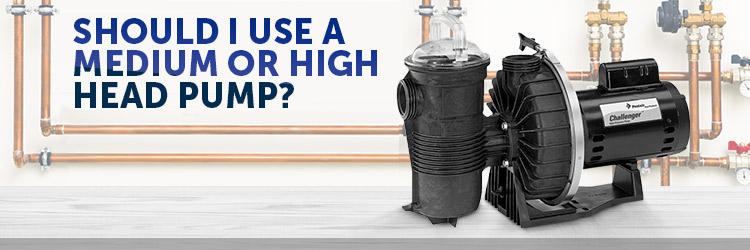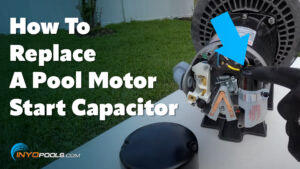After my last article on how to calculate the total dynamic head (TDH) of your swimming pool, I decided to tackle a subject in a similar realm: high and medium head pumps. In the Total Dynamic Head (TDH) blog post we explained that TDH is essentially the force/resistance working against the pump as it pushes water through your pipes. The higher the feet of head, the harder your pump needs to push to counteract that resistance.
Calculate your feet of head according to the blog post or your choice of online calculator and select the style of pump accordingly:
- Medium Head Pump < 65 Feet of Head
- High Head Pump > 65 Feet of Head
To illustrate our devotion to this topic, here is our contributor, Patrick, describing high pressure and high flow in a video from years back:


The Pentair Challenger Series offers a gleaming example of the difference between high head and medium head outputs. The Challenger is a rare pump in the series that offers both a high flow and high pressure. The pump curves show a comparison of flow rates in congruence with horsepower and feet of head.
The High Flow Challenger on the right shows a sharp dip as the feet of head pressure rises. On the other hand, the High-Pressure Series keeps a steady rate of climb as the feet of head peaks. The two styles of Challengers are virtually identical besides the impeller and diffuser designs. These parts turn the spinning force of the motor into pumping action.
Medium Head Pumps (aka High Flow Pumps)
Medium head pumps, also known as high flow pumps, are the most common types found on pool systems today. A basic swimming pool set-up that lacks an attached spa or other water features like waterfalls will usually not require anything more than a medium head pump. High flow pumps are ideal for pools with 35-65 feet of head pressure.
Popular Medium Head Pumps
| Hayward Super Pump | Pentair Challenger – High Flow | Pentair Whisperflo |
|---|---|---|
 |  |  |
| Hayward Super Pump | Go to Pentair Challenger | Go to Pentair Whisperflo |
High-Pressure Pumps (aka High-Performance Pumps)
If your pool has a spa attached or your poolscape includes waterfalls, deck jets, or bubblers that draw from your main pump, we seriously suggest installing a hardy high pressure pump. All those aforementioned add-ons are tacking on yard after yard of feet of head pressure that would slow the flow rate of a medium head pump to a trickle. High pressure pumps earned that name by being able to push water through long lengths of pipe without suffering heavy drop-offs in flow.
High-pressure pumps are ideal for pools with elevated solar heaters. The value of head pressure also accounts for the rise (or lift) of water as it travels through a plumbing line. The feet of head and rise in feet have a 1:1 ratio. A solar heater may tack on 10 to 20 feet of feet of head from elevation alone. Once you add the extra length that is racked up by the coiled heat exchangers you may face 30 feet of head on top of your standard pool plumbing.
Popular High Head Pumps
| Jandy Stealth | Jacuzzi Magnum | Pentair Challenger |
|---|---|---|
 |  |  |
| Go to Jandy Stealth | Go to Jacuzzi Magnum | Go to Pentair Challenger |













Leave a Reply